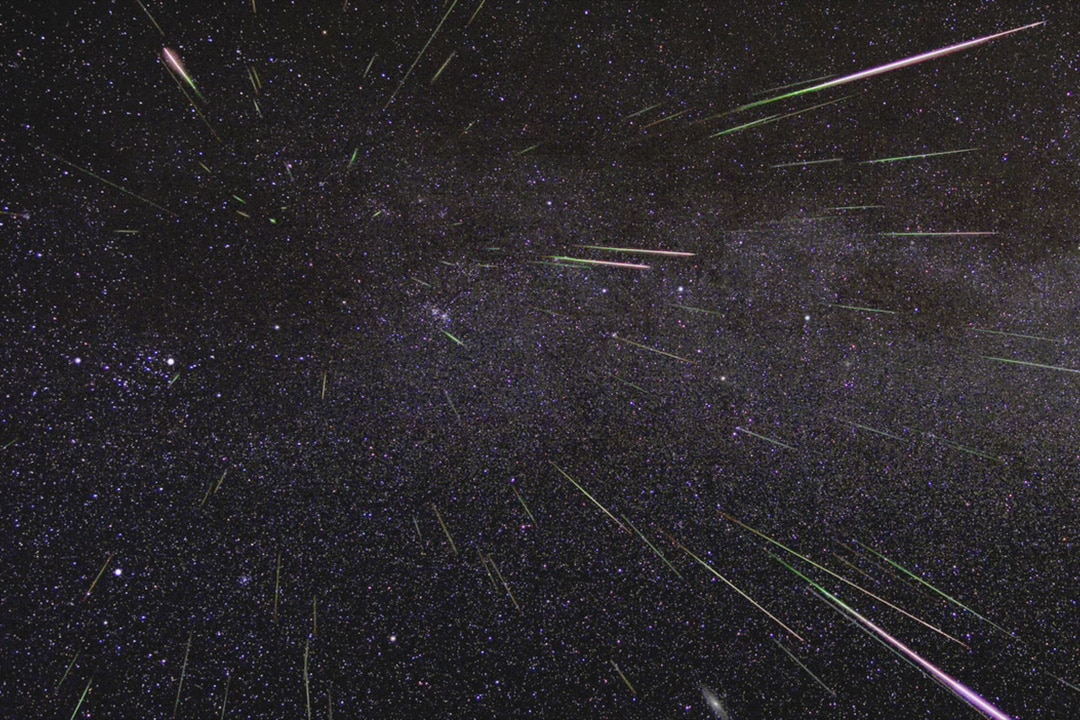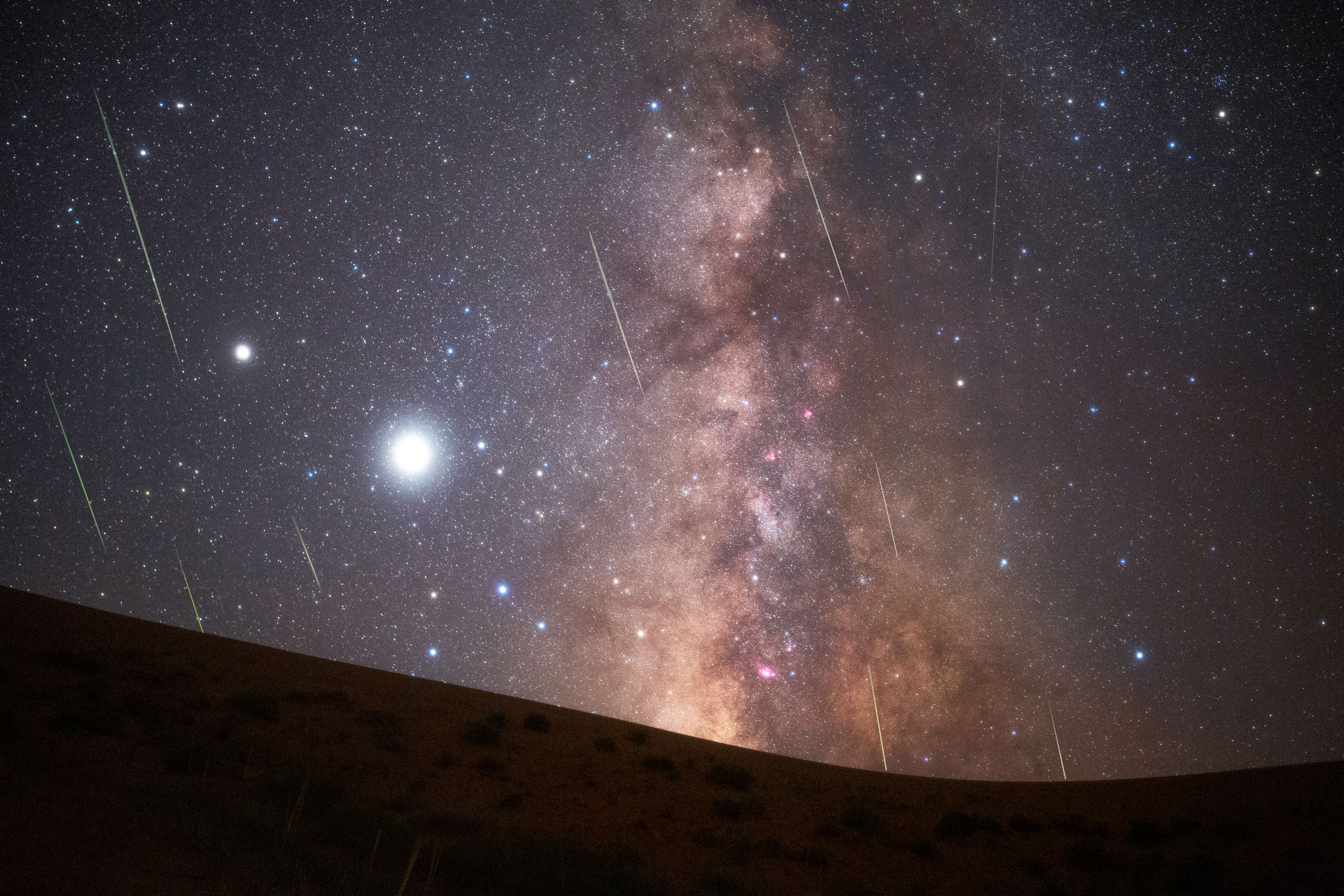Create a free profile to get unlimited access to exclusive videos, sweepstakes, and more!
How to See the Ursid Meteor Shower, Just in Time for the Holidays
Your last chance to make a Christmas wish.

As the winter holiday season continues apace, many of us in the Northern Hemisphere find ourselves shivering in the growing cold. It’s enough to make you want to curl up beneath a pile of blankets, sip cocoa, and watch festive movies (like The Grinch, Krampus, Frosty the Snowman and more, all streaming now on Peacock) until spring arrives.
We don’t blame you if you want to hibernate until the flowers bloom, but you might want to plan to go outside over the next few nights and look up. If you do, you just might see lights streaking across the night sky, but this isn’t Santa and his reindeer, it’s the Ursid meteor shower.
The Ursids Meteor Shower Is Your Last Chance for a Shooting Star in 2023
As the impressive Geminid meteor shower comes to a close, our planet moves into the final meteor shower of the year, the subtler but still worthwhile Ursids. This year, they began on December 17 and will continue through December 26. The shower will peak right in the middle of that period, on the evening of December 21 and the early morning of December 22.
RELATED: The Geminids Meteor Shower Peaks This Week, Here’s How to See Them
This will be your last chance to catch a meteor shower before the new year, but it won’t be an easy one. The Ursids aren’t as dense as the Geminids, peaking at roughly 10 shooting stars per hour, compared to more than 100 per hour with the Geminids. That means you’ll need to have patience if you’re hoping to wish on a shooting star.
Moreover, the cold weather in the Northern Hemisphere isn’t the most pleasant to be in overnight, so you’ll want to bundle up. Lastly, the Moon will be in a waxing gibbous phase, growing toward the Full Moon on December 26. It will be roughly 70% illuminated during the shower’s peak and will be high in the sky at sunset, potentially washing out shooting stars.
Getting a good show might take a Christmas miracle or at least some blankets, warm drinks, and the patience to wait. Getting away from the city and other light sources and giving your eyes at least 30 minutes to adjust to the dark will up your odds.
Where the Ursids Meteor Shower Comes From
Shooting stars are caused by little bits of dust and debris burning up in the Earth’s atmosphere. Most meteor showers are caused by trails of debris left behind by comets. One notable exception is the Geminids, which originate from the active asteroid Phaethon. As comets whizz around the solar system, they leave little bits of themselves behind them like a cosmic slug leaving a slime trail millions of miles long. If those trails intersect the Earth’s orbit, then we fly through them every year when we pass through the right part of space. That’s what’s happening now and it’s the reason that meteor showers happen at roughly the same time every year.
RELATED: “Boomerang Meteorite” Left Earth, Went to Space, Then Came Back
The Ursids are created by the comet 8P/Tuttle, a periodic comet with a 13.6-year orbit. It last passed within the inner solar system in September 2021, so it won’t be back for a while. During that last pass, astronomers took the opportunity to study 8P/Tuttle and discovered that it has a nucleus about 10 kilometers (6.2 miles) across with two distinct nodes. Its weird shape was likely caused by two smaller objects coming together into something like a giant space peanut.
The shower appears to radiate from the constellation Ursa Minor, which is relatively easy to find even if you’re not terribly familiar with the night sky. Ursa Minor is commonly called the Little Dipper, which most folks are already familiar with. If you need a little help finding the right spot, look for the two frontmost stars of the Big Dipper’s cup. If you follow the direction of their line, you’ll find the handle tip of the Little Dipper. That’s Polaris, the North Star, and it’s also the tail of the tiny bear Ursa Minor.
Stay warm out there and when you’re finished, shake off the cold with your favorite holiday flicks, streaming now on Peacock.




























